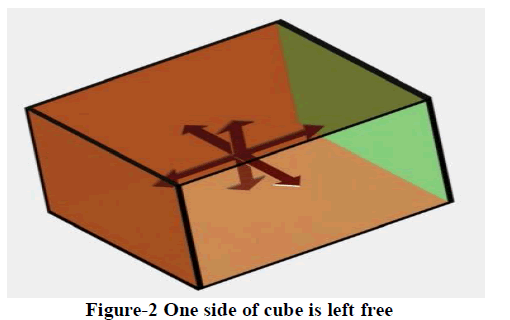ISSN ONLINE(2319-8753)PRINT(2347-6710)
ISSN ONLINE(2319-8753)PRINT(2347-6710)
| *Praveen Singh1, Saurabh Mishra2, Hemant Sharma3 Student, Department of Microbiology, Bundelkhand University, Jhansi, India1 Student, Division of Microbiology, CytoGene Research and Development, Lucknow, India2 Student, Amity Institute of Biotechnology, Amity University, Lucknow, India3 |
| Related article at Pubmed, Scholar Google |
Visit for more related articles at International Journal of Innovative Research in Science, Engineering and Technology
There are various human diseases caused by Vibrio species which are pathogenic in nature these diseases are mainly water-borne. In this case “To Study the Therapeutic Role of Indian Spices In The Treatment Of Gastrointestinal Disease Caused By Vibrio Species”. I have chosen fifteen types of Indian spices which are as follows Amomum subulatum, Brassica nigra, Capsicum annuum, Cinnamomum tamala, Cinnamomum verum, Coriandrum sativum, Cuminum cyminum,Elettaria cardamomum, Glycyrrhiza glabra, Trachyspermum ammi, Pimpinella anisum, Piper nigrum,Trigonella foenum-graecum, Curcuma longa, and Zingiber officinal and prepare their extract in three types of solvents (Ethanol, Methanol and Acetone) with the concentration of 70% against three Vibrio species (Vibrio cholera, Vibrio alginolyticus, Vibrio parahaemolyticus) by using agar well diffusion method.
Keywords |
| Vibrio cholera, Vibrio alginolyticus, Vibrio parahaemolyticus, Amomum subulatum, Brassica nigra, Capsicum annuum, Cinnamomum tamala, Cinnamomum verum, Coriandrum sativum, Cuminum cyminum,Elettaria cardamomum, Glycyrrhiza glabra, Trachyspermum ammi, Pimpinella anisum, Piper nigrum,Trigonella foenum-graecum, Curcuma longa, and Zingiber officinal, Agar well diffusion method. |
INTRODUCTION |
| Over the past two to three decades many beneficial effects of the common food spices on the health have been understood. There are also new concerns about food safety due to increasing occurrence of new food-borne disease outbreaks caused by pathogenic micro-organisms. This raises considerable challenges, particularly since there is increasing unease regarding the use of chemical preservatives and artificial antimicrobials to inactivate or inhibit growth of spoilage and pathogenic micro-organisms [1]. Spices can be added to foods in several forms: as whole spices, as ground spices, or as isolates from their extracts.Spices are some of the most commonly used natural antimicrobial agents in foods. Addition of spices in foods not only imparts flavor and pungent stimuli but also provides antimicrobial property [2]. Spices are aromatic and pungent food ingredients, like herbs, spices can have significant antioxidative effects [3]. Total equivalent antioxidant capacities and phenolic contents (Folin–Ciocalteu) of 32 spices was measured [4]. Spices can also have antibacterial effects. Out of 46 spice extracts evaluated, many exhibited antibacterial activity against foodborne pathogens. Gram-positive bacteria were generally more sensitive than Gram-negative bacteria resistant. The antibacterial activity of the extracts was closely associated with their phenolic content [5]. Natural antimicrobial compounds in spices were found to possess antimicrobial activity. Although some researchers have studied the antibacterial activity of spices against several species of bacteria, few serotypes of Salmonella have been tested. In addition, the antimicrobial property of spices may differ depending on the forms of spices added, such as fresh, dried, or extracted forms. Spices are some of the most commonly used natural antimicrobial agents in foods. Addition of spices in foods not only imparts flavor and pungent stimuli but also provides antimicrobial property [6]. Natural antimicrobial compounds in spices were found to possess antimicrobial activity [7]. Although some researchers have studied the antibacterial activity of spices against numerous species of bacteria. In India, spices have been usually used since ancient times, for the preservation of food products as they have been reported to have antiseptic and disinfectant properties. In this respect, a preface screening for antimicrobial activities of 35 different Indian spices has been carried out. Of the spices surveyed, the results indicate that clove, cinnamon, bishop's weed, chilli, horse raddish, cumin, tamarind, black cumin, pomegranate seeds, nutmeg, garlic, onion, tejpat, celery, cambodge, have potent antimicrobial activities against the test organisms Bacillus subtilis , Escherichia coli and Saccharomyces cerevisiae . The results also establish the traditional use of spices as food preservatives, disinfectants and antiseptic. |
II. MATERIALS AND METHOD |
| Collection of Spices - The spices such as Black cardamom(Amomum subulatum), Mustard seed(Brassica nigra) , Red Chilli (Capsicum annuum), Bay leaf(Cinnamomum tamala), Cinnamon(Cinnamomum verum), Coriander seed(Coriandrum sativum), Cumin seed(Cuminum cyminum), Green cardamom(Elettaria cardamomum), Liquorice (Glycyrrhiza glabra), carom seed/Thyme(Trachyspermum ammi) ) , Anise(Pimpinella anisum) , Black pepper(Piper nigrum), Fenugreek(Trigonella foenumgraecum), Turmeric(Curcuma longa), Dry ginger(Zingiber officinale) were collected from the local area market . The spices were grind well to make powder by using hand homogenizer and mixer grinder and then this fine powder form of spices were used for extraction procedure and other evaluation. Preparation of extract- The extract preparation was done by following method : The spices were ground into powder in a laboratory grinder and sieved into fine powder to be used for extraction. The spice materials were extracted by Ethanol,Methanol and Acetone solvents. These solvents were used at the concentration of 70%. About 1g of finely powdered spices was weighed separately and extracted with solvents in culture tubes. These spices containing culture tubes were kept in dark place for 24-48hrs at room temperature. Then solvents with extract was filtered with muslin cloth and filtered spice extracts were collected in eppendorf tubes (2ml). Antibacterial study (Agar well diffusion method) - The agar well diffusion assay was used to determine the growth inhibition of Vibrio bacteria by the spices extracts. Bacteria were maintained at 4Ãâ¹ÃÅ¡C on (TSA) media plates before use. TSA media was sterilized in autoclave at 121Ãâ¹ÃÅ¡C than poured into petri dishes. The TSA broth were inoculated with different species of Vibrio bacteria and incubated at 37Ãâ¹ÃÅ¡C overnight. Each broth was inoculated with 200μl of different bacterial species mixed well, transferred in to sterile petridishes and allows to set. Using a sterile cork-borer of 5mm diameter, four holes per plate were made into the set agar containing the bacterial culture. A total of 20μl of spice extracts were poured in to the wells and one containing 100ppm solution of antibiotic (ciprofloxacin), the plates were kept in incubator overnight and the zone diameter was then recorded if greater than 5mm. |
III. RESULT AND DISCUSSION |
| The spice extracts of Black cardamom(Amomum subulatum), Mustard seed(Brassica nigra) , Red Chilli (Capsicum annuum), Bay leaf(Cinnamomum tamala), Cinnamon(Cinnamomum verum), Coriander seed(Coriandrum sativum), Cumin seed(Cuminum cyminum), Green cardamom(Elettaria cardamomum), Liquorice (Glycyrrhiza glabra), carom seed/Thyme(Trachyspermum ammi) , Anise(Pimpinella anisum) , Black pepper(Piper nigrum), Fenugreek(Trigonella foenum-graecum), Turmeric(Curcuma longa), Dry ginger(Zingiber officinale) showed a significant level of antimicrobial activity against Vibrio cholerae, Vibrio parahaemolyticus and Vibrio alginolyticus. The extracts of the spices were prepared in Methanol, Ethanol and Acetone. The study also showed that the effect of the spices extracts on above species is varied. The concentrations used during our study were 70%. |
 |
 |
 |
| The extracts of all fifteen Indian spices, Amomum subulatum, Brassica nigra, Capsicum annuum, Cinnamomum tamala, Cinnamomum verum, Coriandrum sativum, Cuminum cyminum, Elettaria cardamomum, Glycyrrhiza glabra, Trachyspermum ammi, Pimpinella anisum, Piper nigrum, Trigonella foenum-graecum, Curcuma longa, and Zingiber officinal showed a significant level of antimicrobial activity against Vibrio cholerae, Vibrio parahaemolyticus and Vibrio alginolyticus. The extracts of the spices were prepared in Methanol, Ethanol and Acetone at 70% concentration. The study also showed that the spices show different antimicrobial effect on above species in different solvents. |
IV. CONCLUSION |
| On the basis of experimental result ,it was concluded that the extract which are obtain from different Indian spices Amomum subulatum, Brassica nigra, Capsicum annuum, Cinnamomum tamala, Cinnamomum verum, Coriandrum sativum, Cuminum cyminum, Elettaria cardamomum, Glycyrrhiza glabra, Trachyspermum ammi, Pimpinella anisum, Piper nigrum, Trigonella foenum-graecum, Curcuma longa, and Zingiber officinal show inhibitory effect on the Vibrio species caused Gastrointestinal diseases. The extracts were obtained in Acetone, Methanol and Ethanol at 70% concentration of these solvents. In which the extract in Acetone shows maximum inhibitory effect in all fifteen different spices while minimum inhibitory effect was seen in case of ethanol and 1000ppm solution of Ciprofloxacin drug show maximum result on all Vibrio species. |
ACKNOWLEDGMENT |
| Thanks are due to Sujeet Kumar Singh, Director (Admin), CytoGene Research and Development, for providing us with all necessary requirements during the project and Ms. Madhulika Singh and Ms. Reena Kumari for their kind support. |
References |
|